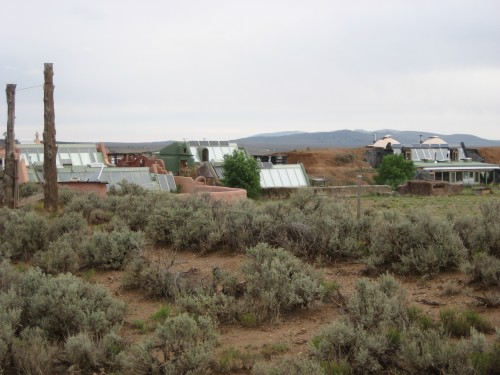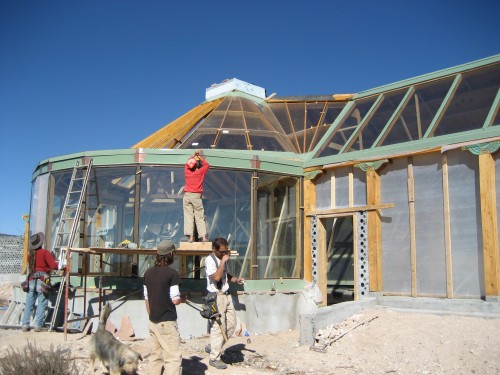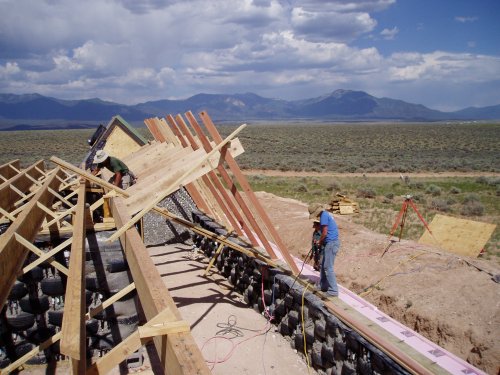So its time to recognize where we are and what’s been going on over the last 40 years. First off, we need to stop seeing a growing economy as a “Healthy Eocnomy” and transition to Gross National Happiness rather than GDP…. I could write pages about this and will at some point, but currently you can check out organizations like CASSE (Center for the Advancement of Steady State Economies).

A landscape that has been exploited beyond its production capacity. It will either take permaculture, or time for nature to heal it or energy (Which currently comes from unsustainable souces) to get a yield out of it.
So since the US hit Peak Oil in 1973 we have been struggling to manage the harsh reality of the direct correlation of Fossil Fuel discovery and consumption and the reality of “Growing” economies. This has resulted in questionable and ultimately unstable growth over the last 40 years. This has been primarily achieved through deregulation and/or privatization of public entities, be it the public utilities, mail delivery systems, Military contracting or you name it. (Passive and aggressive Imperialistic wars of expansion be it the wars in the middle east or through organizations like the WTO, and agreements like NAFTA that achieve growth through exploitation of weaker or less ethical countries until their wages get too high to turn a profit) This has allowed the illusion of growth over these 40 years, which is really only liquidating Ecological, personal and community capital. The only way to manage this is through strong government and cooperatively owned businesses that are of and by all the people. This requires the media to acknowledge and understand this reality and stop its leaning towards market liberalization which results in unethical business men thinking of only their own wealth and thus pilfering our ecological, personal and community capital.
Let me explain this a bit further. Every time a corporation posts profits one must look at where is that “growth” coming from. Is it from the ecological exploitation through using unsustainable practices that future generations are paying for and will be left to heal and reclaim, i.e.: polluting or taking more than the ecosystem can sustain (nature can only produce so much based on available sunlight and climate limitations- i.e.: winter stops most biological production, or i.e.: soil erosion results in production losses as well). Or is it coming from exploiting our personal capital through driving down wages by breaking unions or non-unionized people, which results in perceived “growth” which is really just robbing the workers or the working poor to make it look like “growth”. The other way to make it look like they posted profits is by privatizing our publicly held wealth, i.e.: making the US Postal Service unproductive by forcing them to pre-fund the next 75 year of pensions. This has been making them cut corners to cover those costs and making them uncompetitive to the privately run and much more expensive Fed-Ex, UPS or DHL, thus giving those companies and “hand out” of growth, which is at the cost of one of the most successful government and collectively owned services, which used to provide a good living for its employees and pretty good service to its customers, especially given its size, and doesn’t have to worry about “growth” for its stock holders. Another example of this is privatization of publicly owned water and energy services, which will now need to turn a profit at the expense of the community. The privatization of these entities results in lower wages, wealth being filtered off to stock holders and the bankrupting of our communities.
Its these actions that have given us the perceived idea of “growth” over the last 40 years, yet seen the decline of real wages at the same time. You can read more about this in David Holmgren’s book “Permaculture: Principles and Pathways beyond Sustainability”, of whom I thank for first shedding light on this phenomenon.
It is time to invest in our communities, both human and ecological to build the resources for our children, rather than sending that wealth to a few cunning and sly Business men who learned how to manipulate people and the media to fill their own pockets. Its also time to call out those exceptionally competitive individuals through the ethics of a sustainable planet, of which Churches and Religions should be doing, yet have forgotten that that is their roll (protecting all current and future generations ability to live a good harmonious life on earth through implementation of Ethics), due to centuries or millennia of political corruption clouding their judgment. Its time to own the place you live, develop businesses dedicated to the bioregions well being and the well being of the inhabitants and then teaching other communities around the globe how to do the same thing, all in alignment of creating a sustainable planet for the next millennia. This is critical for a peaceful future whether or not we have a low energy future due to depleting fossil fuel or a high energy future due to a magic sustainable energy source that can replace our current level of fossil fuel consumption.
Its time to stop selling our future and start investing in truly “sustainable systems” modeled after natures 2 billion years of success and the fundamentals of physics to give ourselves and our children an abundant future that comes from within the planets abilities to provide it.









